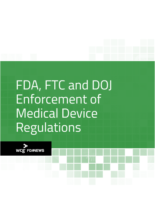
Home » Read and Understand – Why It Won't Work
Read and Understand – Why It Won't Work
Manufacturers typically use several systems to prepare personnel to perform their jobs. These systems include establishing job descriptions, formulating Standard Operating Procedures (SOPs), setting performance guidelines, providing leadership and supervision, and training employees. The goal of these systems is to enable employees to perform their assigned functions competently. Such systems are considered to be "working" to the extent to which they prepare employees to do their jobs effectively.
What differentiates successful systems from not-so-successful ones? Most people would agree that factors such as strong organizational commitment to adhering to performance guidelines and providing solid leadership play important roles in ensuring success. Another key factor involves establishing a method for conveying and assessing employee competencies. In fact, systems that do not include this critical element, no matter how well-intentioned they may be, are likely to be less successful in achieving their goals than those that include this key component.
Although many organizations have adopted a competency-based approach to training and qualifying employees, others have not abandoned practices that involve methods that do not conform to a competency-based approach to training. One of these is the still-popular "read and understand" method of conveying job-related skills and knowledge through SOPS. But there are problems inherent in this approach.
The Weaknesses of "Read and Understand"
The "read and understand" method of SOP training requires employees to read SOPS and to sign a form stating that they have read and understood the information. Although many organizations use this approach, the method has a number of pitfalls. First, consider the use of the word "understand." Trainers developing performance objectives avoid this word for good reason. What exactly does "understand" mean? For example, if an SOP involves performing certain tasks, does "understand" suggest that the employee can do the tasks correctly after reading the SOP? Or does it simply mean that the employee understands that the job requires certain tasks to be performed? And how does this understanding translate into performance, the only true measure of "understanding" in performance-based organizations?
A second problem is that this approach can place undue pressure on employees to sign the "read and understand" statement regardless of any questions they may have about what they have read. How many new employees will speak up if they are not clear about an SOP? How many employees are comfortable expressing their uncertainty about a vaguely worded or ambiguous procedure? The truth is that many employees sign the "read and understand" form as a matter of course, without expressing the concerns they may have about an SOP.
Still another difficulty involves questions around employee reading level and English as a second language. Employees may not be reading on the level in which SOPS are written, or they may be unfamiliar with words or terms in SOPS. And learning styles vary in almost any audience. Employees who learn best by seeing or doing will derive little benefit from reading SOPS. Regardless of learning style, few employees can truly learn a job simply by reading an SOP.
Add to this the problem of poorly written and confusing SOPS and you can see why the "read and under- stand" approach to SOP training presents difficulties. Indeed, employees and managers alike will benefit from adopting a systematic approach to SOP training that is based on demonstrating true competency in skill and knowledge areas.
Next week we’ll talk about steps you can take to put in place a competency-based training program that goes beyond “read and understand.”
Contact Information:
Dave Gallup
GMPTraining.com, Inc.
18585 Coastal Highway
Unit 10, #149
Rehoboth, DE 19971
215-870-5665
dagallup@gmptraining.com
www.gmptraining.com
Upcoming Events
-
25Apr
-
07May
-
14May
-
30May
